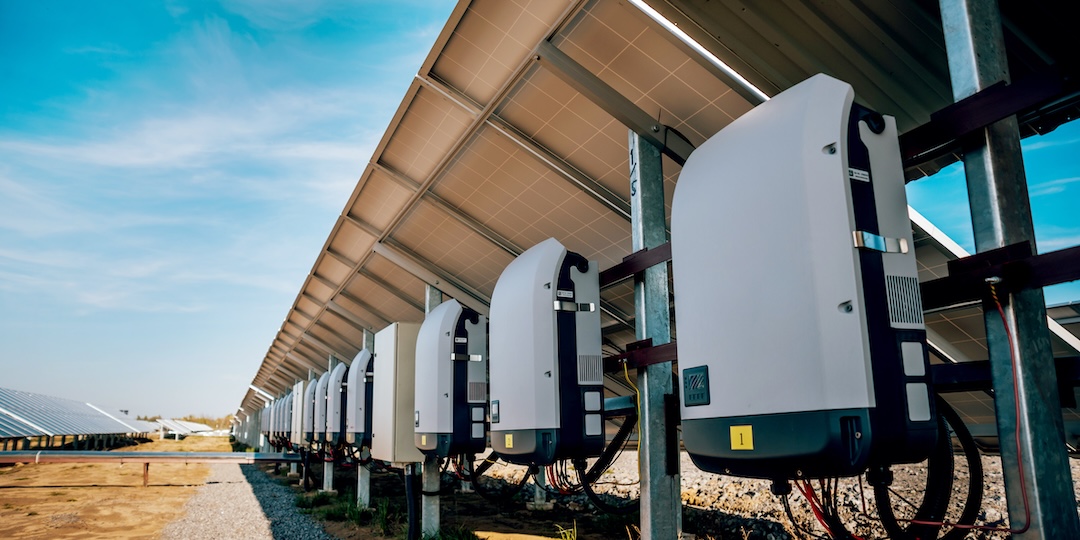Dale Tarr, NERC Reliability Specialist
Quickly growing levels of inverter-based resources over the previous decade have introduced not only a lower emission source of energy to our bulk electric system but one that comes with unique challenges. To help mitigate events such as the two Odessa disturbances (2021 & 2022), NERC released in June of this year, an eleven part series of webinars that take a detailed look into inverter-based resources (IBRs). The Webinars included panelist presentations along with WebEx question-and-answer sessions over a variety of IBR topics. In late August, the recordings were released along with the slide presentations and accompanying FAQs.
The webinars, whose summaries are shared below, included a full range of content from an introduction to the performance challenges with IBRs to registration process, Reliability Standard enhancements, and modeling requirements.
Webinar #1: Introduction to Inverter-Based Resources
We are introduced to what IBRs are, how they function and how they currently contribute to the Bulk Electric System. From there, we are shown how the IBRs differ from conventional synchronous resources and the challenges of modeling and operating power systems with the majority of currently grid following IBRs. The NERC IBR strategy is then reviewed covering Risk Analysis (including disturbance reports), Interconnection Process Improvements, Best Practices and Education (IBR Basics and Primer Documents), along with Regulatory Enhancements.
Webinar #2: NERC Disturbance Reports and Lessons Learned
The second webinar reviewed events and data requests needed with disturbance analysis. Data request issues were highlighted including lack of protection settings, low resolution of data recording and sequence of event logs being overwritten. In addition to Disturbance reports, IBR event analysis and the processes involved were covered. (Original Equipment Manufacturer) OEMs response to events were examined and the corresponding industry reactions.
Webinar #3: Inverter-Based Resource Performance Issues
The third webinar hosted TVA’s, ERCOT’s and CAISO’s response to the exponential increase in IBRs, IBR loss events and modeling reviews.
Webinar #4: Establishing and Enhancing Interconnection Requirements
In this webinar, the transition from IBRs being treated with the approach of “get out of the way” during disturbances to dealing with large scale loss events having large impacts is discussed. It is pointed out during an examination of IEEE 2800, that shortcomings in interconnection processes are having more of an impact than actual IBR technology. The next presenters New England ISO (ISO-NE) and Bonneville Power Administration (BPA) reviewed their requirement of using PSCAD models and studies for IBRs and use of EMT studies.
Webinar #5: Modeling Part 1 – Modeling Requirements, Model Creation, Model Usability
A variety of OEMs for modeling firms discussed their software, processes, experiences with the grid and model development, testing and validation along with adapting for IBRs and the challenges with IBR implementation. Wisconsin based utility ATC presented their experiences in dealing with the large interconnection influx of IBRs, what modeling is used and how they are streamlining the modeling studies process.
Webinar #6: Modeling Part 2 – Model Quality, Model Benchmarking
In this webinar, ERCOT reviewed their model quality and benchmarking. ERCOT shared the successes in their practice of parameter verification for model accuracy and model quality testing along with presentation of the details of these processes. Vestas, a wind OEM, and Tesla, a battery system (BESS) OEM, detailed their modeling challenges and demonstrated their model to product process.
Webinar #7: Studies – EMT, Special Studies, Interconnection Studies
Electromagnetic Transient (EMT) studies and historical uses are detailed, and the tools used to perform the studies are shared by consultant firms. The number and size of these studies are reviewed as well as the applicability and importance to IBRs. Florida Power and Light (FPL) shared an overview of their IBR special studies and modeling techniques as well as their plans to integrate 20GW of solar and 2GW of battery by 2032.
Webinar #8: Interconnection Process
Southern Cal. Edison shared a process overview spanning the application stage through project implementation and the corresponding time frames. Potential delays and hurdles were discussed with examples. American Electric Power (AEP) shared their practices with regards to interconnection Analysis and Enforcement and shared some of the gaps they’ve encountered in enforcement (FAC-001).
Webinar #9: Commissioning
In webinar 9, ISO-NE reviewed their commissioning process and reviewed the model testing and submittal sequence along with the model acceptance tool. AES, as an owner/operator of generation, shared the development of IBR settings and best practices. GE gave their perspective as an OEM developing process steps of commissioning IBRs.
Webinar #10: IBR Registration and Reliability Standards Enhancements
NERC detailed the FERC order modifying the registration process of IBRs along with the NERC response to the FERC filing. NERC shared the ERO BPS analysis of conventional versus IBRs Resources and conducted a review of the 2023 workplan milestones. NERC then covered the standard drafting process and the standard modifications under development to address the increased IBR presence.
Webinar #11: Overview of IBR Risk Mitigations and Next Steps
The final webinar acts as a close-out session with key take-aways from each of the previous sessions and an overreaching view of “what’s next” in implementation of IBRs into the BPS. Finally, NERC presented a series of risk mitigating activities including a review of the strategy presented in the first webinar.











